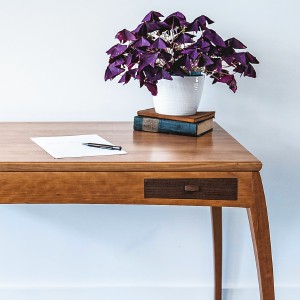Capture the colors of fall leaves
| Published: 11-01-2016 10:21 AM |
As a lifelong New Englander, I know how beautiful and fleeting fall foliage is each year. Thanks to my latest test-drive of various crafting techniques, I now know how finicky and frustrating it is to try to preserve some of that color.
Though some worried that a summer drought would mean muted leaves, this season’s foliage has been spectacular, at least in my corner of New Hampshire. But I’m starting to think photographs might be the best way to capture those colors.
Since there are so many different ways to preserve leaves, I tried four methods instead of this column’s usual three. None of them were particularly difficult, but they all suffered from the same unavoidable problem: The leaves had to dry out for a few days before various protective coatings could be applied. And by then, some of the brightest colors had faded.
Still, the results were pretty, and the leaves look nice scattered on a shelf or strung on clear thread to make a decorative garland. One caveat: Because I tried all of these techniques in just the last few weeks, I don’t know how well the results will hold up over time.
Here’s what I found, with each method rated from one to 10, with 10 indicating the least expensive, easiest and best results:
This method was the easiest and fastest, though probably a better technique for adults than children given that it involves an aerosol spray. I came across this technique on a blog called Small + Friendly, and it couldn’t be simpler: Allow leaves to dry between the pages of a book for a few days, spray one side with an acrylic fixative, allow to dry, and then flip them over and spray the other side. I used Krylon Crystal Clear in the matte finish, and placed the leaves in a cardboard box lined with waxed paper to avoid sticking and contain the spray.
I liked how this method didn’t leave a thick, obvious coating on the leaves, and while I only sprayed a few leaves, it would be easy to coat a large number at a time.
Cost: 7
Article continues after...
Yesterday's Most Read Articles
 N.H. Educators voice overwhelming concerns over State Board of Education’s proposals on minimum standards for public schools
N.H. Educators voice overwhelming concerns over State Board of Education’s proposals on minimum standards for public schools
 Former Concord firefighter sues city, claiming years of homophobic sexual harassment, retaliation
Former Concord firefighter sues city, claiming years of homophobic sexual harassment, retaliation
 Downtown cobbler breathes life into tired shoes, the environmentally friendly way
Downtown cobbler breathes life into tired shoes, the environmentally friendly way
 Students’ first glimpse of new Allenstown school draws awe
Students’ first glimpse of new Allenstown school draws awe
 Voice of the Pride: Merrimack Valley sophomore Nick Gelinas never misses a game
Voice of the Pride: Merrimack Valley sophomore Nick Gelinas never misses a game
 A trans teacher asked students about pronouns. Then the education commissioner found out.
A trans teacher asked students about pronouns. Then the education commissioner found out.
Ease: 9
Results: 7
This technique was easy but a bit messy and took a bit of time given that the coating had to dry before the leaves could be flipped over.
My inspiration was a blog called Gingerbread Snowflakes, which features a detailed description of the process. Again, starting with leaves that have been pressed and dried, coat both sides of each leaf with decoupage glue, waiting for one side to dry before applying the glue to the other side. I used matte finish Mod Podge and a small foam brush.
While this would be a good method for children to try, I did find that I had to be careful not to break the brittle leaves as I brushed. The resulting leaves end up slightly pliable, with a thicker, more obvious finish than the acrylic spray.
Cost: 7
Ease: 6
Results: 6
I had read several bloggers’ accounts of trying this method and was a bit intimidated by tales of hot messes. But I found it easy and manageable in terms of mess. The basic steps, as outlined on the blog Clover Lane, involve melting paraffin wax in a disposable foil pan, holding a leaf by the stem and dipping it into the wax. I covered my counters with newspaper and then waxed paper to contain any drips.
I liked the slight sheen the wax added to the leaves, and though it took a bit of time for the wax to melt, dipping one leaf after another was pretty quick.
While the supplies for all the techniques were similar in cost, I marked this one as a bit more expensive only because unlike with the spray and the Mod Podge, I’m unlikely to use the leftovers for other projects.
Cost: 6
Ease: 6
Results: 8
Martha Stewart recommends preserving leaves in a mixture of glycerin and water. This was the most time-consuming method because the leaves have to sit for a day or two in the solution, but it also was the most hands-off technique.
Mix one part liquid glycerin to two parts water in a shallow container, soak the leaves and let them sit. Once removed, allow the leaves to dry on paper towels. I wasn’t thrilled with the results. My leaves were pliable, but they also appeared more discolored than the others, though that may have been an issue with those particular leaves.
I had to go to several stores looking for liquid glycerin before finding it at a drug store, and though it wasn’t expensive, it doesn’t lend itself to other craft projects as well as the spray or Mod Podge.
Cost: 5
Ease: 5
Results: 5


 Active Aging: John Burke of Peterborough celebrated his 81st birthday with 81 hikes up Pack Monadnock
Active Aging: John Burke of Peterborough celebrated his 81st birthday with 81 hikes up Pack Monadnock Vintage Views: From darkness to light
Vintage Views: From darkness to light From the farm: Spring brings calves, beautiful calves
From the farm: Spring brings calves, beautiful calves NH Furniture Masters present new member show this spring
NH Furniture Masters present new member show this spring
